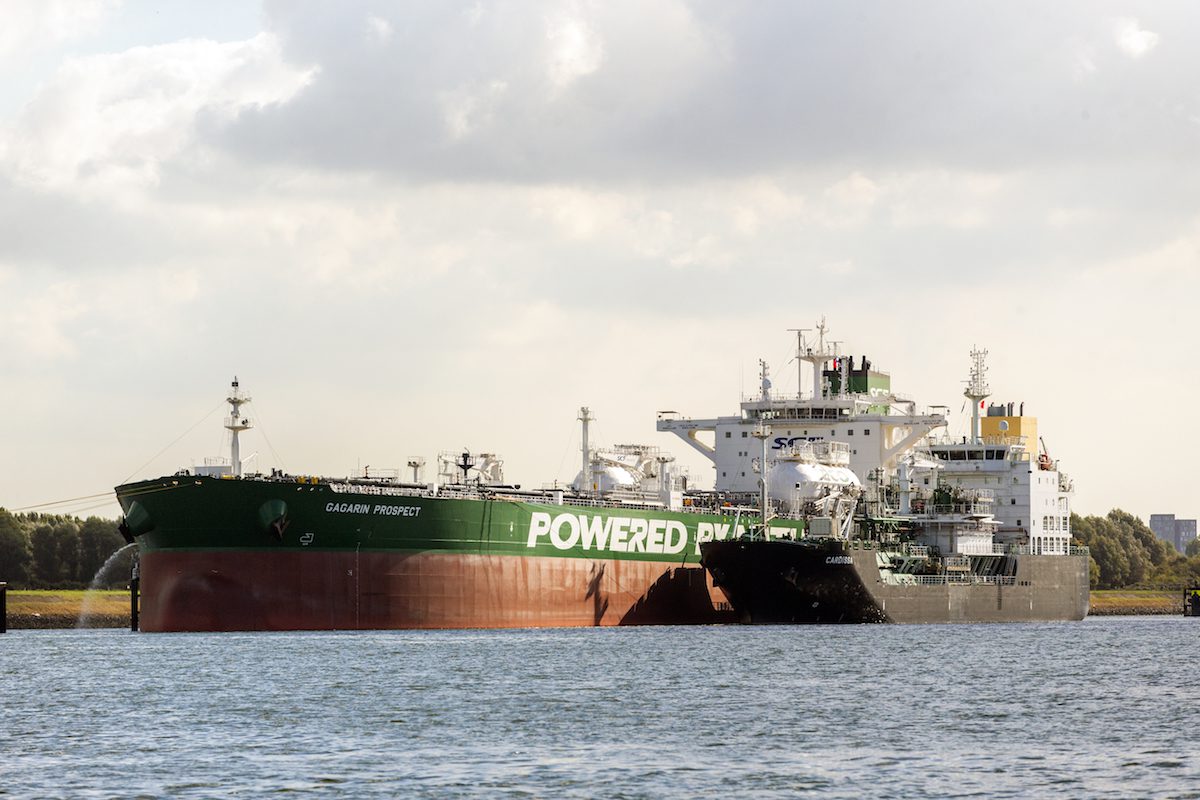Photo: SCF Group
 By Jessica Jaganathan SINGAPORE, Aug 29 (Reuters) – Price reporting agency S&P Global Platts plans to launch its first assessments for prices of liquefied natural gas (LNG) bunker fuel ahead of new shipping rules taking effect from next year which limits the sulphur content of marine fuel.
By Jessica Jaganathan SINGAPORE, Aug 29 (Reuters) – Price reporting agency S&P Global Platts plans to launch its first assessments for prices of liquefied natural gas (LNG) bunker fuel ahead of new shipping rules taking effect from next year which limits the sulphur content of marine fuel.
Companies are exploring cleaner fuel options such as LNG because of a mandate from the International Maritime Organization that requires ships to either use marine fuel, known as bunker fuel, with a maximum of 0.5% sulphur, down from 3.5% currently, or to install pollution-removing devices known as scrubbers. The new rules will go into effect on Jan. 1, 2020.
Platts, a unit of S&P Global Inc, said on Thursday it is launching price assessments on Sept. 2 for LNG bunker fuels in the top global bunkering hubs of Singapore and Rotterdam.
The IMO regulation and rising global LNG supplies have led to an increase in the use of LNG as a maritime fuel, said Platts, adding that it expects LNG supply to the bunkering market to swell to 15 million tonnes a year in the next decade.
“We’re pleased to launch these new assessments covering the nascent but fast growing LNG bunker market,” said Ciaran Roe, global director of LNG pricing at Platts.
“This is especially timely as the industry is grappling with the impact of the IMO 2020 regulations.”
The company is responding to increased queries from the industry to find the prevailing cost of LNG as bunker fuel and is looking to “bring more transparency to pricing on LNG bunkering”, Roe told Reuters.
Platts currently assesses the Japan-Korea-Marker (JKM) price, which is gaining more acceptance as a Asian benchmark for spot LNG cargoes.
Already used to fuel ferry fleets and cruise ships, LNG is gaining traction among freight and cargo shippers, with LNG bunker demand from the shipping sector expected to grow to 20 million to 30 million tonnes per year by 2030. However, overall volumes are still small compared to oil.
In Rotterdam, Europe’s largest port, LNG bunker sales rose more than sixfold in 2018 from a year ago, as gas companies such as Royal Dutch Shell are pushing the fuel because of its lower carbon dioxide and sulphur emissions.
Singapore, the world’s largest marine refuelling hub, has co-funded the construction of several LNG-fuelled vessels. (Reporting by Jessica Jaganathan; editing by Christian Schmollinger)
(c) Copyright Thomson Reuters 2019.

 Join The Club
Join The Club











